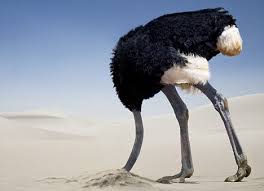

[This post is the first in a three-part series entitled “The Annals of the Indian Ostrich”]
Part 1: The Politics of Perversion
As an Indian-born American, I thought I knew India, Indians, and everything in between.
I was wrong.
For decades, I was taught that India had gained its independence in 1947 from Great Britain. But when the Indian Supreme Court in December ruled to criminalize homosexual sex, I realized that India still is under the British Raj. After all, here were the highest Indian judges, in a post-colonial independent India, announcing that an Indian Constitution – written by Indians and adopted by Indians in 1950 – was impotent in protecting the rights of Indian homosexuals because of a British colonial-era law from 1861. I had no idea that 1861 was still good law. I figured that because the signs were taken down that once read “Indians and Dogs Not Allowed” (which once hung outside bars, stores, and clubs in 1861 India), that somehow Indians were now free of British rule.
I was wrong.
God save the Queen!
All this time, I naïvely assumed that the Indian Constitution – which endows “justice, liberty, equality, and fraternity” to each Indian citizen, provides for a parliamentary form of democratic government, and grants its citizens the right to vote for their own self-chosen rulers rather than remain beholden to their British masters – would have also included a provision that allowed the highest Court in India to grant fundamental rights to its own citizens. I foolishly presumed that because the ban on homosexual sex was overturned in Great Britain in 1967, that the Indian Supreme Court in 2013 would have had the ability to do the same. The Court, I thought, would naturally ignore an invalid British law and instead honor the rich culture and history of India’s own ancient civilization.
Wrong again.
After all, the British made clear in 1861 that the Indian way of thinking needed some fixing.
For example, section 377 of the Indian penal code (passed by the Brits in order to prevent homosexual acts) was titled “Unnatural offences.” Compare this to the Rig Veda, one of the oldest texts of ancient India, which states of homosexuality, “vikruti evam prakriti” (“That which seems unnatural is also natural.”).
Or, section 377 bans fellatio. Compare that to the ancient Indian Kama Sutra, which devotes an entire chapter to the art of auparishtaka, or “mouth congress.”
Or, Section 377 bans anal penetration. Compare that to the ancient Indian caves of Khajuraho, where Indian kings would send their sons to learn about human sexuality and manhood. There, the carvings are replete with depictions of anal intercourse, bisexuality, and even group orgies.
Under Section 377, which imposes a life sentence for “unnatural” sex acts, many of ancient India’s great mythological heroes would be imprisoned. Shikhandi, for instance, underwent a sex change and made love to another woman before slaying the indestructible Bhishma in the Mahabharat. The gods Shiva and Vishnu each would have been imprisoned for life for their gay union in conceiving the child god Ayyappa. The great Bhagiratha, who brought the Ganga to earth, would never have been born because each of his lesbian mothers would have been in separate prison cells.
Don”t get me wrong. Ancient Indian civilization didn”t outright endorse homosexuality. Like many ancient civilizations, they looked down upon it. But if we”re comparing dinosaurs, the ancient Indians were far more liberal and accepting than their ancient colleagues. In fact, ancient Indian mythologies, literature, art, and architecture did not acknowledge only homosexual acts; they acknowledged homosexual marriage. The Kama Sutra reads: “There are also third-sex citizens, sometimes greatly attached to one another and with complete faith in one another, who get married together.” (KS 2.9.36). Or the Jayamangala of Yashodhara states: “Citizens with this kind of homosexual inclination, who renounce women and can do without them willingly because they love one another, get married together, bound by a deep and trusting friendship.” Naturally, I presumed that if the Supreme Court was going to abide by its own Constitution (which states, “It shall be the duty of every citizen of India…to value and preserve the rich heritage of our composite culture”), then the rich heritage and ancient Indian culture of homosexuality would trump Victorian-era anachronism.

At least no one can criticize the Indian Supreme Court for not having a sense of humor. Where they failed to defend the rights of minorities in India, they compensated by uniting the right-wing crazies of the Indian political circus. As Devdutt Pattanaik observed, who else could “bring the radical Islamic cleric, the saffron-robed yogis, the Bible-bashing clergyman to the same side of the table”? Bigotry certainly makes odd bed fellows. In India, the very institutions and religious groups that should stand for tolerance and speak on behalf of minority rights are the most narrow minded. Unlike the more progressive thinking of ancient India, today”s Indian right-wing chooses to drive the country in reverse. Rather than recognizing that homosexuality and gay marriage are a living, breathing reality, and have been so in India for thousands of years, the modern Indian right-wing instead chooses to stick their heads in the sand and adopt the life of the Indian Ostrich.
In any case, if the Indian Court made one thing abundantly clear on December 11 – I thought to myself – it was that no individual person in India, or minority group, no matter how good the reason, was above the law.
I was wrong.
In part two, I will discuss the Indian Ostrich and the Devyani Khobragade case.